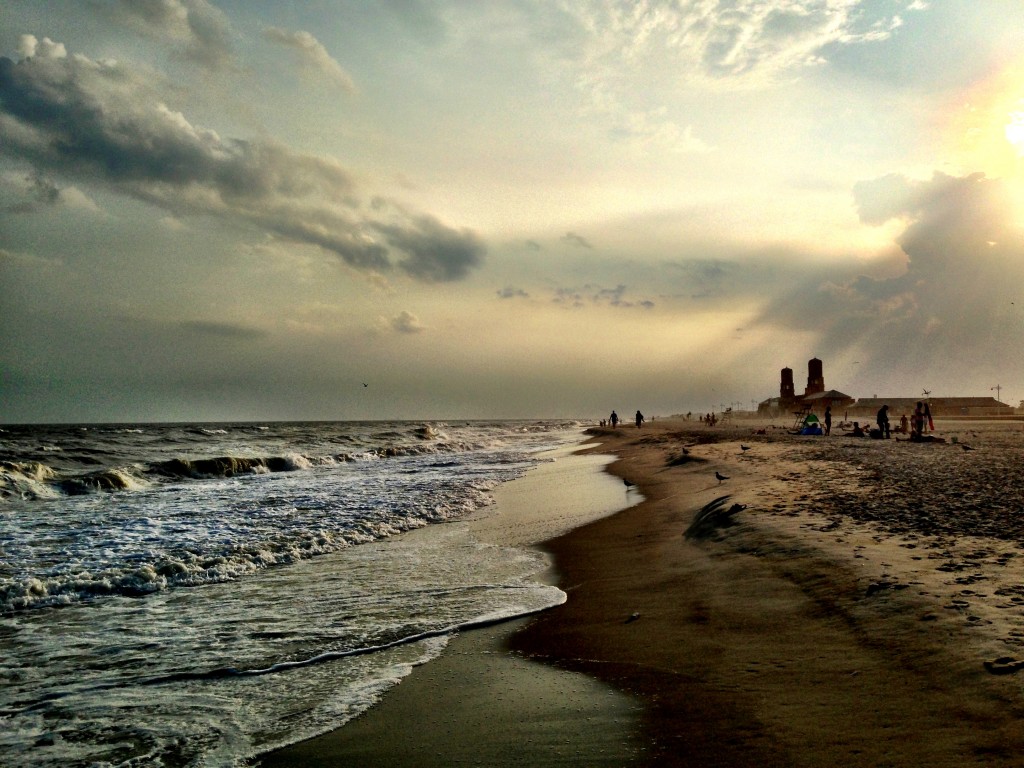
Congress is slated to soon vote on a plan to build a natural gas pipeline under Jamaica Bay and Jacob Riis Park to a gas metering station in Floyd Bennett Field. Photo Courtesy David Shankbone/Wikimedia
As two companies prepare their final environmental impact statement for a plan that, if approved, will deliver additional natural gas to South Queens, Rockaway and parts of Brooklyn, Assemblyman Phil Goldfeder (D-Rockaway) is pushing Williams and National Grid to commit to improve the portions of Jamaica Bay that will be affected by the controversial project.
The Rockaway Delivery Lateral Project, for which the public comment period ended earlier this month, will, according to the two companies, help to address growing energy needs in New York City by adding another delivery point from the Transco Lower New York Bay Lateral pipeline, which exists now off the Atlantic Coast. The $265 million project would, if approved by Congress, transport natural gas to National Grid through the proposed Brooklyn Queens Interconnect Project and would, according to the companies, make it easier for residents in South Queens, Rockaway and parts of Brooklyn to convert from heating fuel oil to natural gas.
Goldfeder recently penned letters to the companies urging them to restore the marshlands that will be impacted during the project’s construction and design a thorough plan to improve portions of the artificial reef or ocean habitat that too will be affected.
“We must do everything we can to project our communities and the fragile ecosystems surrounding Jamaica Bay from any harm while the new Williams’ pipeline is constructed,” Goldfeder said in a prepared statement. “Williams has committed to being a strong community partner, but they must agree to oversee and repair any potential damage to nearby artificial reef and take into consideration funding for offset mitigation in Jamaica Bay to restore our marshlands.”
The project involves installing a 3.2-mile, 26-inch pipeline that would run approximately 2.9 miles offshore and 0.3 miles onshore. The planned route takes the line under Jacob Riis Park to a tie-in point with National Grid located outside the Gateway National Recreation Area.
“The installation of the ocean portion of this project will cause a substantial environmental impact on marine wildlife, essential fish habitat, and to the adjacent reef, which must be mitigated – both at the reef site and with offset mitigation in Jamaica Bay for marsh restoration projects,” said Dan Mundy, Sr., president of the Jamaica Bay EcoWatchers.
In his letter to Williams, Goldfeder requested that the company commit to remediate any damages the pipeline installation may cause to the ocean habitat, as well as assist in mitigation efforts in Jamaica Bay. Specifically, he asked that they provide funding to repair and improve the adjacent artificial reef and invest in wetlands mitigation. The legislator stressed that the offshore portion of the plan will make a large environmental footprint and argued the company has the potential to offset this damage by augmenting the artificial reef and creating new wetlands in Jamaica Bay. Such a promise would also land the company much more goodwill among the project’s neighbors.
“Williams has already created a comprehensive grant program for community organizations and has contributed financially to Sandy recovery,” Goldfeder said. “But they must take the next step before any further work permits are issued. I urge Williams to do the right thing and invest in the growth, safety and protection of our community.”
The pipeline project has garnered vehement critics, including a collective of various civic and neighborhood organizations named the Coalition Against the Rockaway Pipeline. The group, which is working to prevent the construction of the pipeline, argue that legislators who appear poised to greenlight the project are “working hand in glove with private industry to promote hydrofracking.”
Hydrofracking is the process by which natural gas is extracted and entails injecting water laced with chemicals into the ground at high pressure to break rock. A 2010 report by Manhattan Borough President and Comptroller-elect Scott Stringer stated that seven states in the country have reported “serious incidents” of water contamination and explosions near sites where companies have used hydrofracking. A 2008 report from the U.S. Land Management Bureau said groundwater in Sublette County, Wyo., which has one of the country’s largest natural gas fields and where hydrofracking was commonly employed, was contaminated with benzene, a substance that has been linked to cancer and nervous system disorders.
Williams has stressed that the company will pay up to $150,000 for each year that it leases the land to Gateway National Park. Coalition members scoffed at this, saying the pipeline will disturb a wetlands area that is home to numerous endangered species and will go under Jacob Riis Park – “a beautiful beach area used by thousands of New York families every year.”
The Coalition Against the Rockaway Pipeline has also argued that Williams has “poor” safety record, including operating under a federal corrective order for almost four years. In 2013, there were allegedly four serious incidents at Williams sites, including a May 30 explosion at a compressor station in Branchburg, New Jersey that injured 13 people. On June 13, an explosion at a Louisiana natural gas facility caused two fatalities and 70 injuries.
By Anna Gustafson

This was the biggest project ever taken place at Jamaica Bay. This provided gas in much bigger amount to several regions. Heating and Cooling Toronto
ReplyDelete